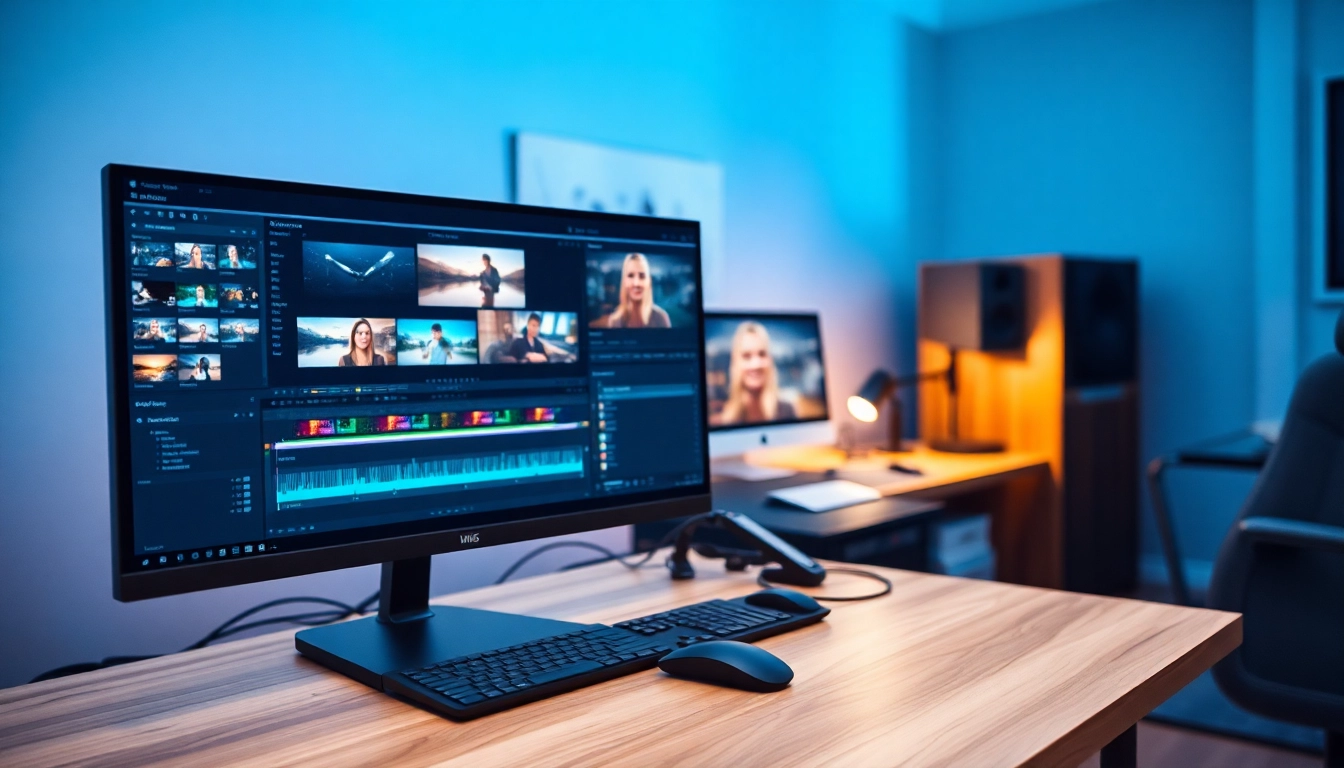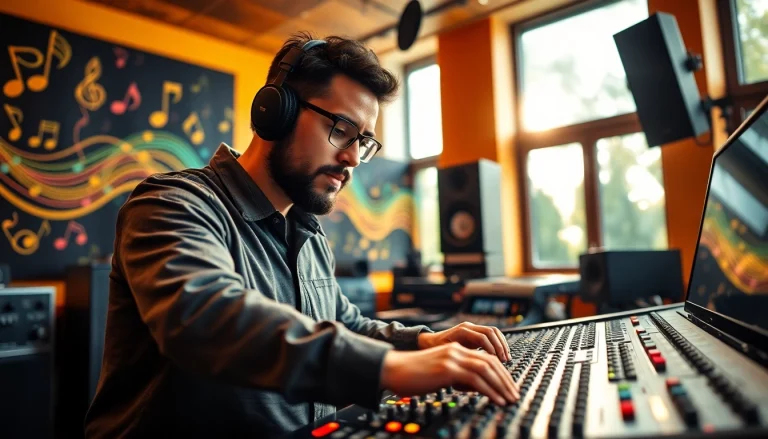Understanding Editing & Post-Production
Defining Editing & Post-Production in Video Creation
Editing and post-production are essential phases of the video creation process that transform raw footage into a polished product. Editing involves selecting and arranging shots to create a coherent narrative, while post-production encompasses all the modifications made to video and audio after filming. It’s during this stage that filmmakers add visual effects, graphics, sound design, and color correction, ultimately shaping the viewer’s experience. To dive deeper into the significance and intricacies of Editing & Post-Production, one must understand that this process is the magic that happens after the “cut” has been called on set.
Stages of Editing & Post-Production Explained
The journey through editing and post-production can be outlined in several key stages:
- Ingesting Footage: Importing and organizing all recorded media into editing software.
- Rough Cut: Creating a basic edit that captures all essential scenes, which serves as the backbone for the final edit.
- Fine Cut: Refining edits with a focus on pacing, transitions, and continuity, ensuring the narrative flows seamlessly.
- Audio Editing: Enhancing dialogue, adding sound effects, and incorporating background music to enrich the auditory experience.
- Color Grading: Adjusting colors and tones to create a specific mood or aesthetic consistency.
- Visual Effects (VFX): Adding graphics or effects that cannot be achieved during primary photography.
- Mastering: Exporting the final version of the video, which includes preparing different formats for delivery across platforms.
Common Misconceptions about Editing & Post-Production
Despite its importance, there are various misconceptions regarding editing and post-production. A prevalent myth is that anyone can edit video content with the right software. While tools have become more accessible, effective editing requires skill, artistry, and a good understanding of storytelling techniques. Another misconception is that post-production is only about technical tasks. In reality, it’s a creative phase that significantly contributes to a project’s emotional and aesthetic quality.
Essential Tools for Editing & Post-Production
Software Options for Editing & Post-Production
The selection of editing software can greatly influence the quality of the final product. Industry-standard software includes:
- Adobe Premiere Pro: Known for its versatility and wide range of features, it’s favored by professionals in various sectors.
- Final Cut Pro: Preferred by many Mac users, it offers powerful editing tools and seamless integration with other Apple products.
- DaVinci Resolve: Renowned for its superior color correction capabilities, it also includes advanced editing features.
- Avid Media Composer: A staple in film and television, it excels in handling large projects with complex timelines.
Hardware Requirements for Efficient Editing & Post-Production
To run editing software effectively, certain hardware components are essential:
- Processor: A fast multi-core processor ensures smooth editing without lag, particularly with high-resolution footage.
- RAM: At least 16GB is recommended to handle complex projects, with 32GB for more demanding workflows.
- Graphics Card: A powerful graphics card can significantly reduce rendering times and enhance playback capabilities in editing software.
- Storage Solutions: Fast SSDs are ideal for storing footage and projects, while larger HDDs can serve as backup storage.
Creating an Optimal Workspace for Editing & Post-Production
Setting up an efficient editing environment can increase productivity and creativity. Consider the following elements:
- Ergonomic Furniture: Choose a comfortable chair and desk to reduce strain during long editing sessions.
- Monitors: Dual or large high-resolution monitors enable better multitasking and improve overall workflow.
- Soundproofing: A quiet place enhances audio quality during editing, ensuring that sound editing can be done with precision.
- Organized Storage: Keeping files organized digitally with consistent naming conventions speeds up the editing process.
Best Practices for Effective Editing & Post-Production
Developing a Structured Workflow
Having a structured workflow is crucial for maintaining efficiency during editing and post-production. Here are some recommendations:
- Plan Ahead: Before beginning an edit, map out the key scenes and consider how they will fit together.
- Set Goals: Break the project into sections, setting deadlines to keep the project on track and avoid last-minute rushes.
- Use Templates: Create or use existing templates for frequently used graphics, titles, and transitions to save time.
- Review Regularly: Frequently review your edits to ensure they align with the initial creative vision.
Tips for Enhancing Visual Storytelling in Editing & Post-Production
Editing is not just about cutting and splicing; it’s about storytelling. Here are strategies to enhance your narrative:
- Maintain Continuity: Pay close attention to the flow between shots to keep the narrative seamless.
- Utilize B-Roll: Incorporate supplementary footage to add depth and context to the main narrative.
- Employ Color Schemes: Use color grading to reflect the mood of the scenes, guiding the audience’s emotional response.
- Create Dynamic Pacing: Vary the length of cuts to build tension or provide relief, allowing the audience to engage more deeply with the story.
The Importance of Feedback in the Editing & Post-Production Process
Feedback is vital for refining your project. Here’s how to utilize it effectively:
- Seek Diverse Opinions: Gather feedback from different people to gain varied perspectives on the narrative and presentation.
- Implement Constructive Criticism: Take notes on critiques and prioritize making adjustments that have the most significant impact on the final edit.
- Host Review Sessions: Consider organizing sessions with cast and crew to view the edit together and discuss potential improvements.
- Keep an Open Mind: Remain adaptable to suggestions, as they can lead to new creative opportunities and enhance the project’s overall quality.
Common Challenges in Editing & Post-Production
Navigating Technical Issues During Editing & Post-Production
Technical challenges can arise throughout editing and post-production. Here are common issues and solutions:
- Software Crashes: Regularly save projects and work with autosave settings enabled to avoid losing work.
- Exporting Errors: Conduct test exports to identify potential issues beforehand, ensuring the final render meets technical specifications.
- Outdated Hardware: Regularly upgrade hardware to handle modern software demands, ensuring a smooth editing experience.
- File Corruption: Use reliable storage solutions and backup files regularly to prevent permanent data loss.
Balancing Creativity and Technical Constraints
Striking a balance between creative vision and technical limitations is essential:
- Know Your Tools: Understand your software and hardware capabilities to leverage them effectively in your creative process.
- Stay Informed: Stay updated on industry trends and advancements to explore new creative outlets within your technical scope.
- Adapt Footage: Sometimes, improvisation with available footage can yield innovative results—being resourceful is key.
- Time Management: Prioritize tasks that align most closely with your creative goals to maximize efficiency.
Time Management Strategies for Editing & Post-Production
Time management is crucial for efficient editing and post-production. Here are effective strategies:
- Use a Timeline: Set specific milestones leading up to the final deadline. With a clear timeline, it becomes easier to monitor progress and make adjustments as necessary.
- Prioritize Tasks: Identify critical tasks and focus on them first. Consider using techniques like the Eisenhower Matrix to prioritize based on urgency and importance.
- Eliminate Distractions: Minimize interruptions by creating a dedicated editing environment, which fosters concentration and enhances productivity.
- Limit Revisions: Set a finite number of revisions to avoid getting stuck in a loop of endless adjustments, allowing for a focus on finishing.
Future Trends in Editing & Post-Production
Innovations Shaping the Editing & Post-Production Landscape
The landscape of editing and post-production is ever-evolving, with innovations allowing for more creativity. Key trends to watch include:
- Artificial Intelligence (AI): AI tools are improving editing efficiency by automating mundane tasks, from organizing footage to suggesting edits.
- Cloud-Based Editing: Collaborating in real-time on cloud platforms is becoming commonplace, enabling teams to work seamlessly from any location.
- Improved Color Grading Tools: Advanced software solutions are allowing editors to achieve cinematic color grading more efficiently than ever before.
- Integration of Virtual Reality (VR) and Augmented Reality (AR): These technologies are creating new storytelling formats and enhancing audience engagement.
Adapting to New Technologies in Editing & Post-Production
As technology advances, staying adaptable is critical:
- Continuous Learning: Engage in professional development through courses, webinars, and tutorials to keep skills relevant.
- Experimentation: Regularly experiment with new tools and techniques to discover innovative approaches to storytelling.
- Networking: Join industry forums and attend events to share insights and stay informed about technological advancements.
- Incorporation of Feedback: Embrace constructive criticism to refine skills and improve project outcomes.
Preparing for Changes in Industry Standards in Editing & Post-Production
Being prepared for changes in industry standards involves proactive measures:
- Staying Informed: Follow industry publications and influencers to keep up with changing norms and expectations.
- Flexibility: Be ready to adapt current practices to align with new standards as the industry evolves.
- Collaboration: Work closely with others in different disciplines (such as sound design or visual effects) to create a more comprehensive understanding of the changing landscape.
- Emphasis on Ethical Practices: As standards evolve, pay attention to ethical practices in production, especially regarding representation and licensing.








